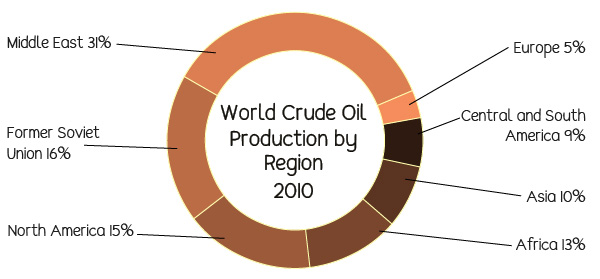- Natural Resources
Distribution of Natural Resources
Natural resources are not evenly distributed all over the world. Some places are more endowed than others — for instance, some regions have lots of water (and access to the ocean and seas). Others have lots of minerals and forestlands. Others have metallic rocks, wildlife, fossil fuels, and so on.
For example:
- The US has the world’s largest coal reserves with 491 billion short tons accounting for 27% of the world total. Australia is the world’s largest net exporter of coal, accounting for 29% of global coal exports
- China remains the largest producer of gold, with a 14% share of global production.
- The United States, Russia, and Canada are the leading producers of timber and pulp. Annual exports of primary and secondary wood products from tropical forests have exceeded US$ 20 billion in recent years, and further increases are anticipated.
Many countries have developed their economies by using their natural resources. Some also get a lot of income from their resources, in the form of tourism and recreation. Brazil and Peru, for example, make a lot of money from The Amazon Forests, which is super diverse in trees and animals.
Crude oil is another important natural resource. From Crude oil, we get many petroleum products such as petrol, diesel, and gas. We use these to fuel our cars and provide energy to warm and cool our homes. But Crude oil is not evenly distributed all over the world. Below is an illustration of how much each region of the world produces.

International and local trade has its roots in the fact that resources are not evenly distributed on the earth’s surface. Regions with crude oil can drill oil and sell to regions without oil, and also buy resources such as timber and precious metals (gold, diamonds, and silver) from regions that have them in abundance.
The uneven distribution is also the root of power and greed in many regions. Some countries use their wealth in resources to control and manipulate regions with fewer resources. Countries and regions have even gone to war over the management, ownership, allocation, use, and protection of natural resources and related ecosystems.
Our research for this topic included these sources:
1 The World FactBook, CIA, https://www.cia.gov/library/publications/the-world-factbook/fields/2111.html
2 British Geological Survey: World Mineral Statistics., http://www.bgs.ac.uk/research/highlights/2012/goldSilverBronze.html
3. FAO. (2009) Global demand for wood
